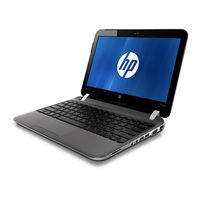User Manuals: HP Pavilion 15-b100 Thin Profile Laptop
Manuals and User Guides for HP Pavilion 15-b100 Thin Profile Laptop. We have 3 HP Pavilion 15-b100 Thin Profile Laptop manuals available for free PDF download: User Manual, Technical White Paper
Advertisement
HP Pavilion 15-b100 Technical White Paper (8 pages)
Notebook Hard Drives & Solid State Drives
Brand: HP
|
Category: Laptop Accessories
|
Size: 0.22 MB
Table of Contents
Advertisement
Advertisement


